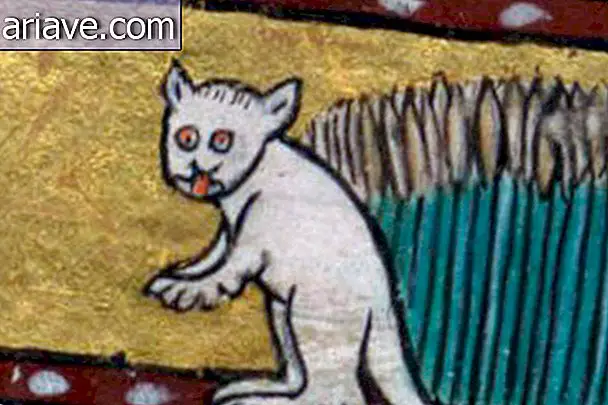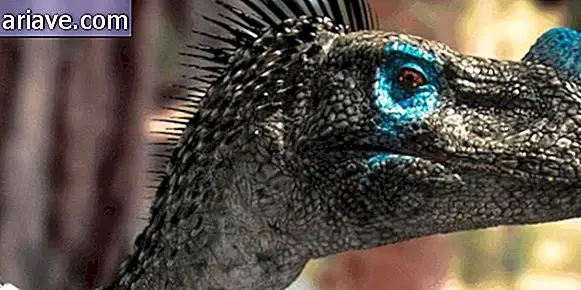10 famous mummies and their fascinating stories
Nowadays death is seen in a very different way than it was in ancient times. While today we rush to close the coffins containing the bodies of our loved ones, ancestral societies were in the habit of performing elaborate afterlife rituals, often interspersed with an incredible balance between the macabre and the fascinating.
Following are the stories of 10 mummified corpses that have interesting stories and help us understand a little more about the culture and beliefs of ancient civilizations.
10 - Rameses III
If there is one thing for which ancient Egyptians are recognized beyond their elaborate pyramids and sphinxes, it is their ability to create perfectly preserved mummies. Many of the remains originated in this period would be noteworthy, such as those of King Tutankhamen or Seti I, but the remains of Pharaoh Rameses III are the most mysterious of all - by far.
He was one of Egypt's most famous regent-gods and ruled the country during its twentieth dynasty. Since then, scholars have spent more than a millennium debating the events that led to his death. Fortunately, his body was treated with a complex variety of distinct treatments that helped preserve the corpse.
CT scans revealed a deep cut in his throat, 7 cm long, reaching almost to his spine. The wound broke not only his main blood vessels, but also his esophagus and trachea, putting an absolute end to the reign of one of Egypt's last great pharaohs. To make matters worse, many believe he was killed by their own children.

9 - The Grauballe Man
In the mid-twentieth century, a number of incredibly well-preserved bodies were discovered in a peat bog (the most common type of soil in marshlands) in Denmark. Among them, Grauballe's man is the most fascinating because of his haunted make-up, vividly red hair and perfectly discernible facial details.
Carbon dating analyzes based on the still intact tissue of his liver showed that he lived for over 2, 000 years and evidence found in his body - or not found, rather - suggests that he was murdered as part of a ritual. sacrifice. He passed away at the age of about 30, probably from a deep cut in his neck.

8 - Princess Ukok
If you need one more reminder that tattoos last forever, this maiden is the absolute proof. Although her body itself is not so well preserved, it is noticeable due to the intricate tattoos that can still be clearly seen on her mummified skin. She was about 25 years old when she left this world over 2, 500 years ago.
Digital recompositions show that the drawings include animals like deer, but with a mythical touch - the animal in question has Capricorn antlers and a griffon beak. Researchers believe she was a member of the Pazyryk tribe, nomads who lived in the Siberian mountains and strongly believed that tattoos help people meet each other in the afterlife.
Because of their beliefs, the brands created by the group are among the most elaborate that existed in the period. Near the remains of the princess were found parts of six horses, which were credited for their important role in escorting people to the world of the dead.

7 - The wet mummy
In 2011, Chinese workers were digging the foundations for a new road when they discovered the preserved corpse of a woman who lived during the Ming Dynasty 600 years ago. Even after spending all this time buried in damp soil, the mummy was surprisingly well preserved.
Not only was her skin intact, but her hair and even her eyebrows were still perfectly in place. In addition, many elaborate pieces of jewelry were found with her, including a large jade ring on her middle finger and a silver hair clip still holding her locks behind.
As the practice of mummification is quite unusual in China, the preservation of women remained a great mystery. Researchers believe the most likely explanation is that the process happened naturally because of the composition of the water the body was in, which had too little oxygen for bacteria to be able to complete the decomposition routine.

6 - Torquay Tutankhamen
Mummification is not a very popular funeral choice these days. However, Allan Billis, a British taxi driver who died of lung cancer at the age of 61, not only volunteered to go through the process but accepted that the fact be documented and broadcast on television.
Prior to his death, he donated his body to science, which allowed Dr. Stephen Buckley of York University to make him the first corpse in over a thousand years to be mummified by the same techniques as the ancient Egyptians who were used in Tutankhamen for over 3, 000 years.
Your family seems not to have bothered much with the decision. At the end of the process, his wife proudly declared that she is "the only woman in the country who has a mummy husband." Plenty of reasons to be proud of, right?

5 - Dashi-Dorzho Itigilov
Once upon a time there was a monk whose name resembles a tongue twister. One evening in 1927, he told his students and fellow monks that it was time for him to move from this life to the next, and asked them to accompany him during meditation. According to the story told, during the session he quietly passed away.
Shortly thereafter, his body was buried sitting in the lotus position, protected from nature by a pine box. Many years later, his body was exhumed, and it was found that he was not only well preserved, but still in the same meditation pose. His coffin was filled with salt and he was replaced in the grave.
Recently, they removed it from its resting place, with the presence of a large number of witnesses - including forensic scientists and experts. Again, the body was found in an almost perfect state. Examination of samples of his skin and hair revealed that Itigilov's cells looked more like those of someone who had been dead for 36 hours than those of a person who died nearly 100 years ago.

4 - The Franklin Expedition Mummies
In 1845, a group of over 100 men left for the New World hoping to find the Northwest Passage, a legendary trade route to Asia. The two ships carrying them, however, never reached their destination and no one heard of them again until 1850, when another expedition found the remains of a ghost community on Beechey Island, with three mysterious graves containing the bodies of members of the previous group.
More than 100 years later, in 1984, a group of anthropologists traveled to the region to perform forensic tests on these corpses. After exhumation, they came across spectacularly well-preserved bodies thanks to the permanent freezing of the tundra, among other factors.
In addition to finding signs of pneumonia and tuberculosis, scholars have found that each of the dead had a lethal amount of lead in their system, probably from the ship's water distillation system. The amount of metal found is staggering - it's as if each of them has consumed 3.3 mg a day over eight months to reach that total.

3 - The woman who gave birth to a mummy
In the year 1955, Zahra Aboutalib went to the hospital to have her baby, but even after a long labor, the child was not born. Her doctor ordered a caesarean section, but because she was terrified of the surgery, she fled the scene. Some time later, her son died inside her womb, and yet she refused to let her little body be removed.
About 46 years later, she began to experience excruciating pain in her abdomen. By taking an X-ray, doctors found a large mass they believed to be a tumor, but further testing revealed that it was actually the calcified remains of Zahra's son, which remained inside his mother for nearly five decades.
This phenomenon is extremely rare, with only about 300 cases documented throughout history. The process begins when the body cannot expel the dead fetus. So, to protect itself from infection caused by decaying tissue, the mother's body creates a layer of calcified material around the corpse, effectively mummifying it and making it a “stone baby”.

2 - La Doncella
“The Maiden” is what the preserved body of a 15-year-old Inca girl was called the preserved body as likely part of a sacrificial ritual performed over 500 years ago. The ceremony took place on the Argentinian Llullaillaco volcano, 6, 700 meters above sea level. Their remains, along with those of two other children, were found in 1999.
Since then, scientists have uncovered many facts about the girl's life and death. Before meeting her end, she suffered from a disease similar to tuberculosis or a chronic lung infection. Although these conditions were almost a death sentence at the time, it is believed that the real cause of his death was hypothermia.
Obviously, her countrymen took great steps to comfort her before she died - for them, being sacrificed was a great honor. In addition to having corn liquor in his system, fragments of coca leaves (from which cocaine is extracted) were found in his mouth. The Incas used to chew the plant to counteract the effects of altitude sickness.

1 - Avoid Peron
In life, Eva Peron was the wife of then-president of Argentina, Juan Peron. On July 26, 1952, the beloved First Lady died of lung cancer at the age of 33. After his death, his body was preserved using a set of distinctive treatments to keep him presentable in a public place where the country's grieving population could go to say goodbye.
Then, in 1955, antiperonist militants stole Evita's corpse, sending her on an adventure that lasted nearly 15 years. Eventually, the remains were returned to her husband, who had then married a woman named Isabel. Unfortunately, the corpse had suffered many injuries, including trauma to the face and foot and a missing finger.
After recovering Evita's custody, the couple are said to have kept her on display at their residence, sometimes even placing it on the kitchen table. Rumor has it that Peron's second wife combed the deceased's hair every day and even came in with her in her coffin, hoping to "absorb some of her magical vibrations." Today, the remains of Argentina's eternal first lady finally rest in peace in the family crypt.

And you, do you know any spectacular or mysterious stories about preserved dead? Leave your opinion in the comments.
* Originally posted on 10/18/2013.











